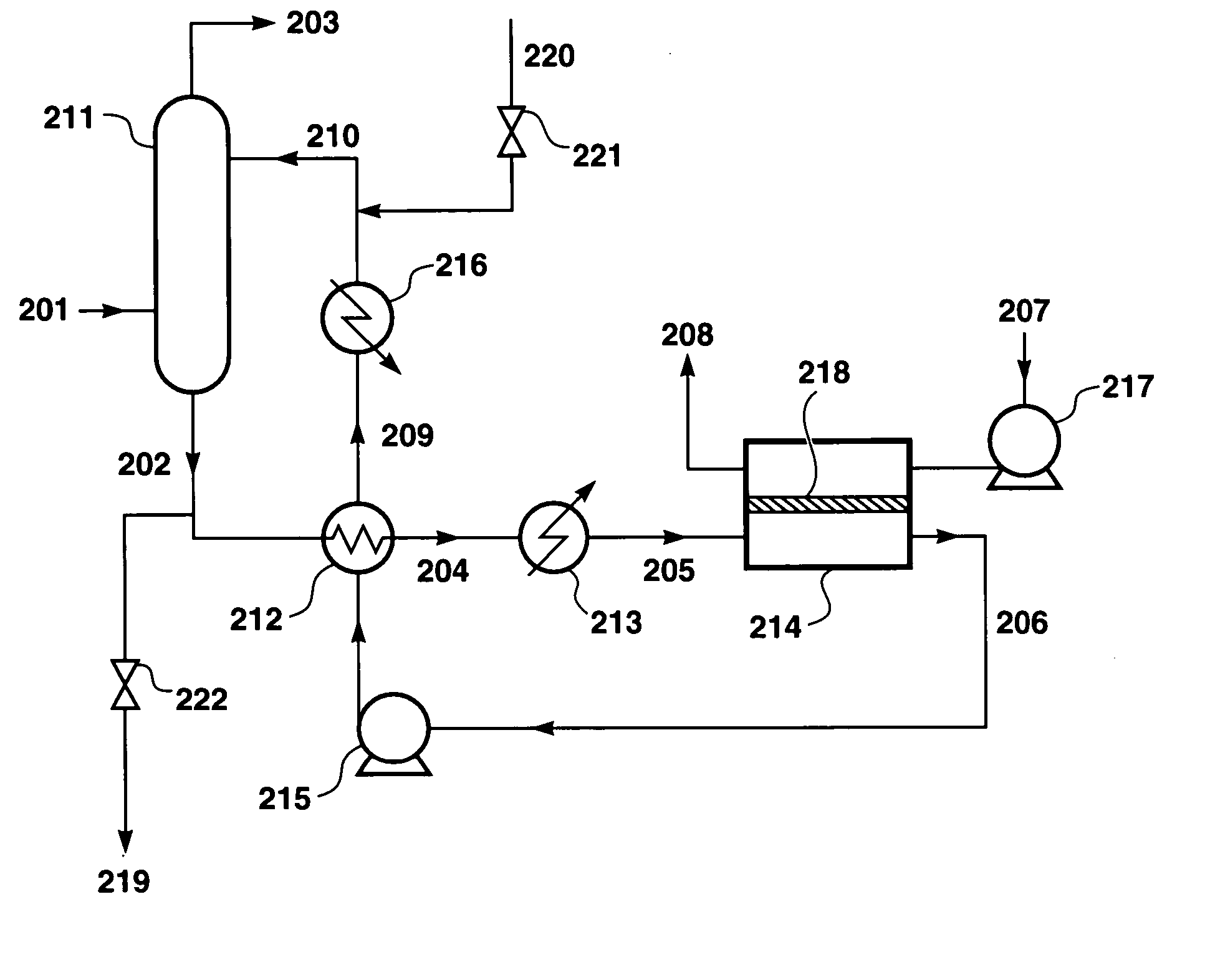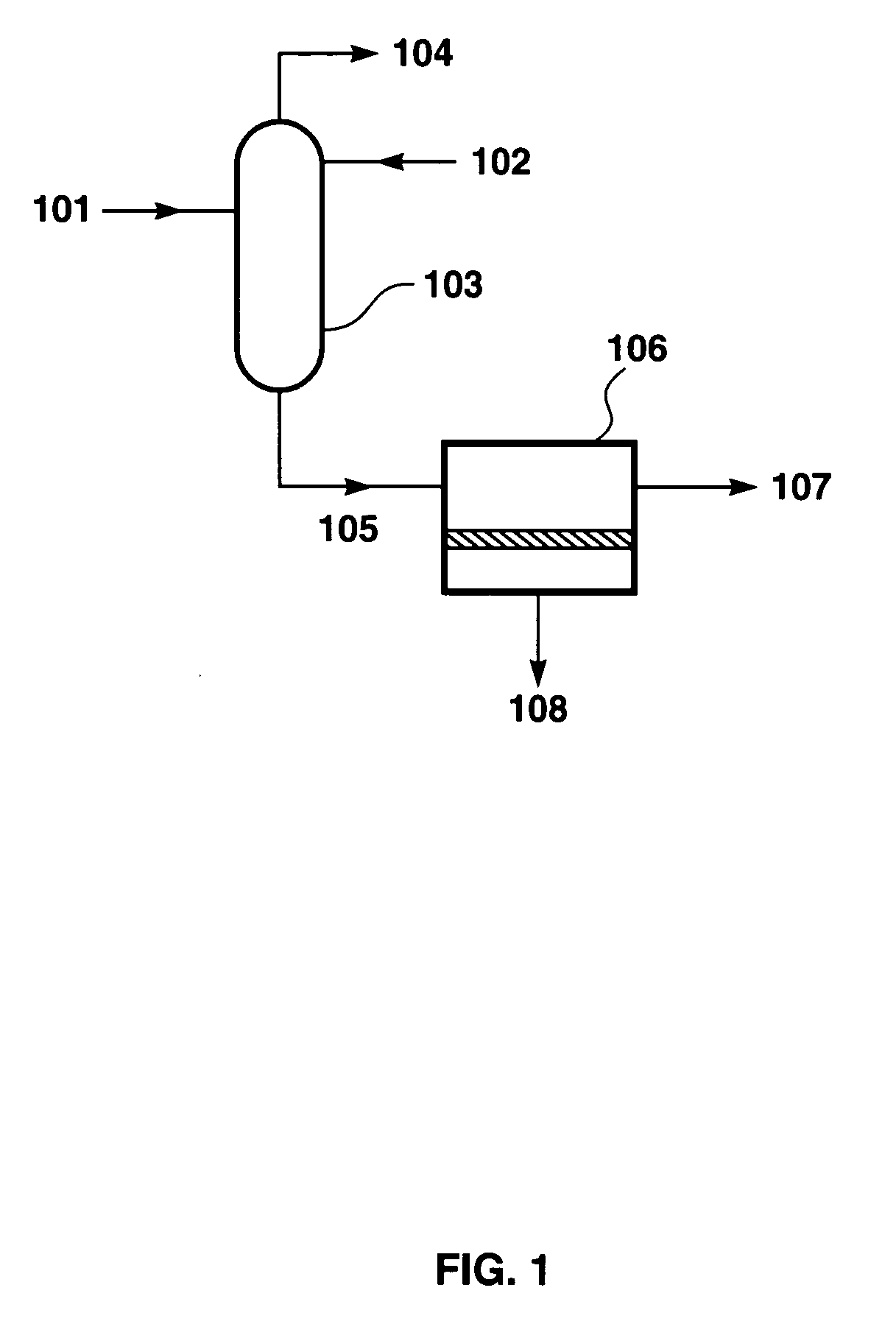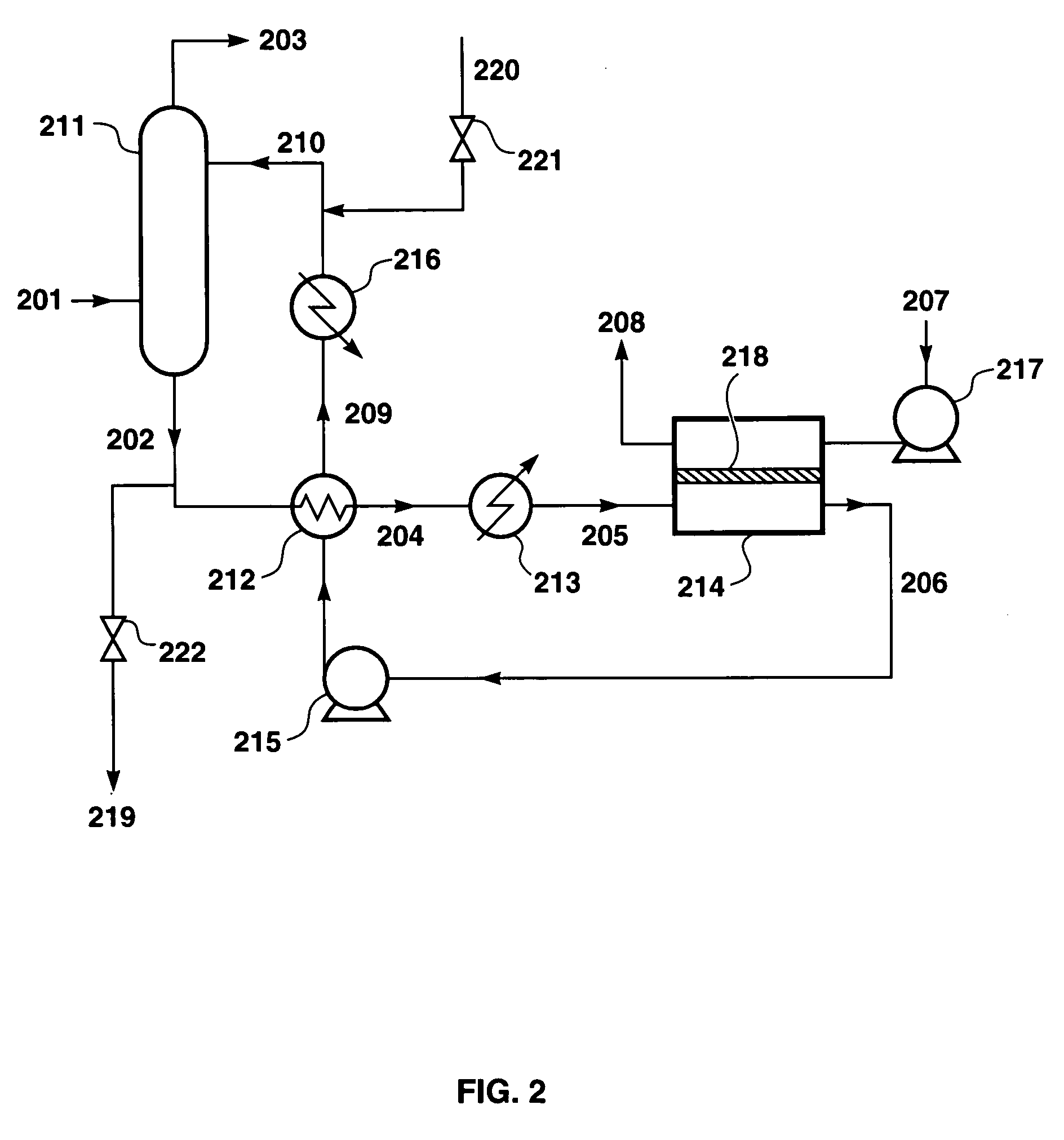Natural gas dehydration apparatus
a technology of natural gas and dehydration apparatus, which is applied in the direction of chemistry apparatus and processes, separation processes, dispersed particle separation, etc., can solve the problems of reducing, but not eliminating, btex and other, additional gaseous or aqueous waste stream, etc., and achieve the reduction of the dew point of the treated natural gas and the water content of the regenerated glycol
- Summary
- Abstract
- Description
- Claims
- Application Information
AI Technical Summary
Benefits of technology
Problems solved by technology
Method used
Image
Examples
example 1
[0132]An experiment was performed to determine the water flux of a zeolite membrane module (Mitsui USA, New York), containing 70 cm2 of membrane area. The zeolite module was tested at 100° C. with a triethylene glycol mixture containing 5 wt % water. A nitrogen sweep was provided on the permeate side. The flow rate of the feed solution was 0.25 gpm. The results are shown in Table 1.
[0133]
TABLE 1Vapor Pressure-NormalizedTemperatureN2 SweepWater FluxWater FluxExpt. #(° C.)(L / min)(g / m2 · h)(g / m2 · h · psid)1985.2602321005.013043
example 2
[0134]Two series of experiments similar to those of Example 1 were carried out with a silica membrane module (Pervatech, Enter, The Netherlands), containing 55 cm2 of membrane area. The silica module was tested with triethylene glycol mixtures containing 0.7–5.5 wt % water. The mixture also contained 0.5 wt % hexane and 0.5 wt % toluene. The first series of experiments was carried out at about 130° C., the second set at about 150° C. The upper temperature was the limit of the test system, determined by the heat transfer capacity available in the system. The feed flow rate was 0.5 gpm. A nitrogen sweep at a flow rate of 2.5 L / min was provided on the permeate side. The results of the experiments are shown in FIG. 3, which plots the water flux of the membrane as a function of the feed water concentration.
[0135]In all experiments the permeate was essentially pure water with hexane and toluene present in the low ppm range. FIG. 3 shows that the flux increases with the water concentration...
example 3
[0136]Permeate samples were collected during the silica membrane pervaporation experiments of Example 2, and were analyzed for their hexane and toluene content by GC. The very low permeation rates of toluene and hexane made accurate measurements with our equipment difficult. However, representative data are shown in Table 2.
[0137]
TABLE 2FeedEquilibriumVapor Pressure-Concen-VaporPermeateNormalizedtrationPressureConcen-FluxComponent(wt %)(psia)tration(g / m2 · h · psid)Water5.421.699.99+ wt %35Triethylene93.60.13none—GlycoldetectedToluene0.51.518 ppmw0.009Hexane0.58.722 ppmw0.002
[0138]The highest toluene concentration measured was 50 ppmw (ppm by weight) and the highest hexane concentration was 30 ppmw; many samples contained significantly less. Based on the highest concentrations measured at 157° C., the toluene pressure-normalized flux is on the order of 10−2 g / m2·h·psid, and the n-hexane flux is on the order of 10−3 g / m2·h·psid. These fluxes are orders of magnitude lower than the wat...
PUM
| Property | Measurement | Unit |
|---|---|---|
| Temperature | aaaaa | aaaaa |
| Flow rate | aaaaa | aaaaa |
Abstract
Description
Claims
Application Information
 Login to View More
Login to View More - R&D
- Intellectual Property
- Life Sciences
- Materials
- Tech Scout
- Unparalleled Data Quality
- Higher Quality Content
- 60% Fewer Hallucinations
Browse by: Latest US Patents, China's latest patents, Technical Efficacy Thesaurus, Application Domain, Technology Topic, Popular Technical Reports.
© 2025 PatSnap. All rights reserved.Legal|Privacy policy|Modern Slavery Act Transparency Statement|Sitemap|About US| Contact US: help@patsnap.com



